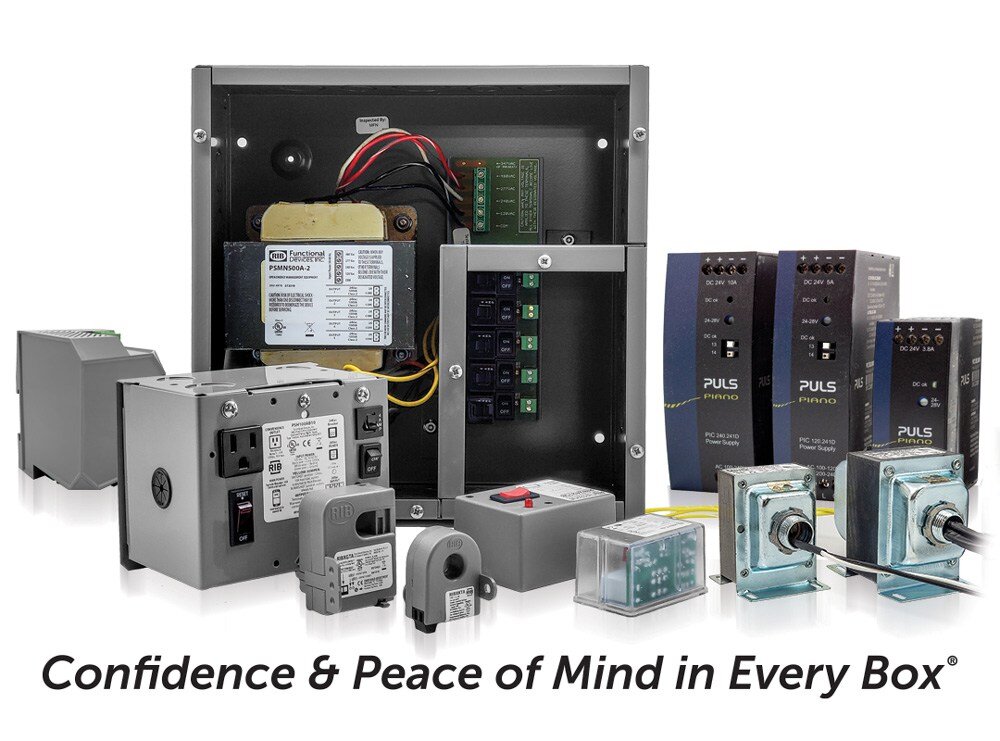It comes as no surprise that a commercial building needs ample electricity to operate all its necessary systems. Any measures a facility manager can take to incorporate up-to-date and smart building technology into a building’s energy management can improve efficiency and help keep operating costs under control.
Two key solutions for maximizing energy savings in industrial applications include incorporating occupancy sensors and daylight harvesting. Let’s explore how these technologies can reduce energy consumption while enhancing comfort and efficiency.
Functional Devices offers a variety of energy-saving lighting control components that can work in tandem with smart building technology like advanced occupancy sensors and daylight harvesting. Whether you need a relay, transformer, dimmer, or wireless device, we’ve crafted quality products with care since 1969.
Understanding Advanced Occupancy Sensors
Think of occupancy sensors as almost like motion detectors—these little wonders sense when people are in a room and trigger system adjustments as needed. For example, an occupancy sensor might activate the HVAC system when someone enters a room and turn it off when the person leaves.
The difference between a motion sensor and an occupancy sensor is that an occupancy sensor doesn’t need significant motion to detect human presence. Here’s how the different types work instead:
- Passive infrared (PIR)
- Detects infrared radiation (body heat) emitted by objects
- Typical applications include security and lighting systems.
- Ultrasonic
- Emits an ultrasonic sound wave and interprets any changes to sound wave frequencies as movement
- Typical applications include lighting systems.
- Dual-technology (PIR + Ultrasonic)
- Detects both heat and motion through a combination of PIR and ultrasonic technology
- This is one of the most common types of sensors.
- Image-processing and AI-driven sensors
- Interprets images to determine the presence and number of people and provides accurate and precise data
- Typical applications include smart buildings, office space management, retail analytics, and public space density trends.
Because a building’s systems can automatically respond to real-time data, a facility manager can reduce wasted energy in unoccupied spaces by installing occupancy sensors. The U.S. Department of Energy estimates occupancy sensors could save 10 to 90 percent of energy use in a commercial space.
Exploring Daylight Harvesting Technology
Daylight harvesting, also known as daylight response, uses sensors to detect natural light in an area and reduce artificial lighting to an appropriate level. A building doesn’t need double lighting, so daylight harvesting is there to save the day. This smart building technology works well in spaces with enough windows for ample daylight.

Daylight harvesting reduces the amount of artificial light used during daylight hours, thus saving energy. It also increases occupant comfort and productivity due to increased natural light exposure. A recent study indicated that savings from the installation of LEDs and daylight harvesting systems have the potential to reduce electricity consumption and carbon emissions by 11.7 percent and total annual utility costs by 6.3 percent.
Integrating Occupancy Sensors and Daylight Harvesting for Efficient Energy Management
Using occupancy sensors and daylight harvesting can significantly increase energy savings in a commercial building. These smart building technologies enable immediate and automated responses to real-time occupancy and light data, allowing facility managers to achieve better efficiency and cost savings in their energy management.
Both advanced occupancy sensors and daylight harvesting allow for intelligent automation of lighting and HVAC, streamlining operations and reducing the energy consumption of two of the most power-hungry systems. Implementing both solutions also facilitates a seamless adaptation to occupancy patterns and natural light availability.
Practical Implementation Tips
The success of maximizing energy savings will depend on many factors, and we recommend discussing your goals and plans with a company that provides energy design services. Here are some general tips to keep in mind as you move forward:
- Choose the right kind of occupancy sensor for your space.
- Calibrate and position photosensors correctly for optimal performance.
- Integrate with smart building management systems (BMS) and IoT protocols.
- Incorporate adequate monitoring to assess performance and energy savings.
Lighting Controls Powered by Functional Devices
The combined power of occupancy sensors and daylight harvesting can significantly benefit your commercial building, improving energy efficiency, cost savings, comfort, and sustainability. We expect greater adoption of these smart building technologies for better responsive and automated energy management.
Although Functional Devices doesn’t specialize in occupancy sensors, we offer many peripheral products you’ll need to support their functionality and daylight harvesting. For example, our innovative “Relay In a Box®” comes prepackaged for better efficiency and easy installation. Contact us to learn more about what we offer!
About Functional Devices, Inc.

Leaders in the Industry
The world was a very different place in 1969, when Functional Devices, Inc. was founded by engineer and electronics enthusiast Albert Rittmann, but our commitment to evolution and versatility has allowed us to remain a key player in the building automation and lighting controls industry for over 55 years.
Today, as we embrace emerging technology and lean into the future of building automation, our products are still manufactured in the USA with global materials, and we are still committed to our mission of enhancing lives in buildings and beyond. Back in 1969, Albert could never have predicted the technological advances we live with today, but with the groundwork he laid and the vision of his successors, Functional Devices has adapted and grown into a company that can handle anything.